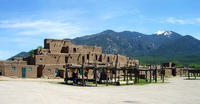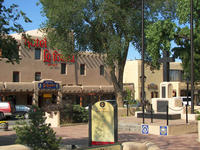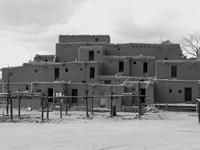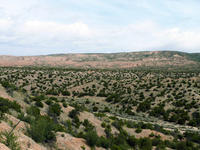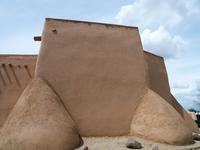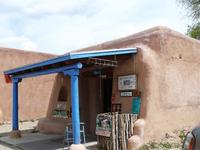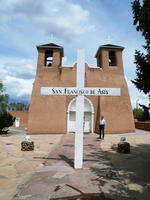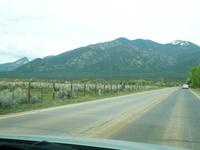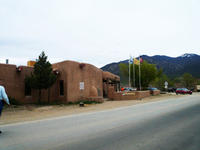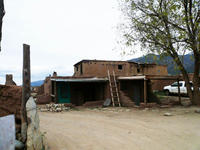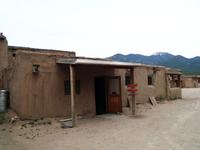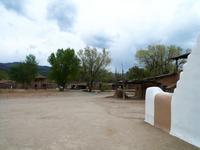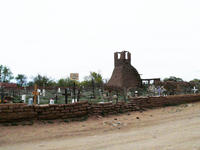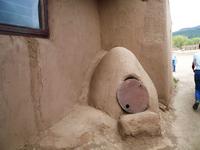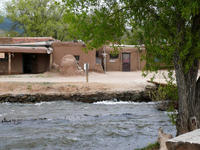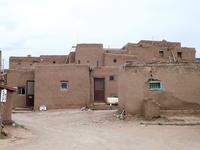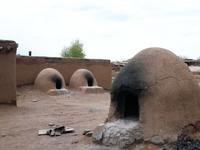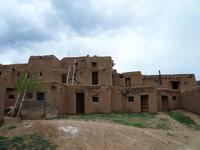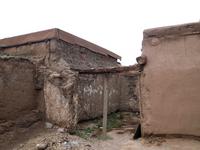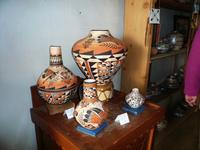You are in: North America -> United States of America -> Pueblo de Taos, and traditional search or Image Gallery will yield results of this site only
Pueblo de Taos
| Site number: | 492 |
|
| Type of site: | Cultural | |
| Date: | - | |
| Date of Inscription: | 1992 | |
| Location: | North America, United States of America, New Mexico | |
Up to 75 images are shown here. Click on each for more details or on Image Gallery for more images.
| Description: | Pueblo de Taos is an adobe settlement located in the valley of a small tributary of the Rio Grande. Composed of dwellings and ceremonial buildings, it characterizes the culture of the Pueblo Indians of Arizona and New Mexico. --WHMNet paraphrase from the description at WHC Site, where additional information is available. | |
| Taos Pueblo (or Pueblo de Taos), continuously inhabited for more than 1,000 years, is the ancient pueblo of a Northern Tiwa speaking Native American tribe of Pueblo people. It lies about 1 mile (1.6 km) north of the modern city of Taos, New Mexico, USA, on Red Willow Creek or Rio Pueblo, a small stream which flows from the Sangre de Cristo Range. 95,000 acres (384 km²) are attached to the pueblo, and about 2,000 people live there. In the Northern Tiwa language, the name of Taos is Tua-tah, which means "our village." Taos Pueblo is a member of the Eight Northern Pueblos. Taos Pueblo's most prominent architectural feature is a multi-storied residential complex of reddish-brown adobe divided into two parts by the Rio Pueblo. According to the Pueblo's Web site, it was probably built between 1000 and 1450 A.D. It was designated a National Historic Landmark on October 9, 1960, and later became a World Heritage Site. As of 2006, about 150 people live in it full-time. The history of Taos Pueblo include the plotting of the Pueblo Revolt in 1680, a siege by U.S. forces in 1847, and the return by President Nixon in 1970 of the Pueblo's 48,000 acres (194 km²) of mountain land taken by President Theodore Roosevelt and designated as the Carson National Forest early in the twentieth century. Blue Lake, which the people of the Pueblo traditionally consider sacred, was included in this return of Taos land. The Pueblo's web site names the acquisition of the sacred Blue Lake as the most important event in its history due to the spiritual belief that the Taos natives originated from the lake itself. The North-Side Pueblo is said to be one of the most photographed and painted buildings in the Western Hemisphere. It is the largest multistoried Pueblo structure still existent and continuously inhabited. It is made of adobe walls that are often several feet thick. Its primary purpose was for defense. Up to as late as 1900, access to the rooms on lower floors was by ladders on the outside to the roof, and then down an inside ladder. In case of an attack, outside ladders could easily be pulled up. The homes in this structure usually consist of two rooms, one of which is for general living and sleeping, and the second of which is for cooking, eating, and storage. Each home is self-contained; there are no passageways between the houses. Taos Indians made little use of furniture in the past, but today they have tables, chairs, and beds. In the Pueblo, electricity, running water, and indoor plumbing are prohibited. --Wikipedia. Text is available under the Creative Commons Attribution-ShareAlike License. | ||
| Source: | http://whc.unesco.org/en/list/492 | |
| Reference: | 1. UNESCO World Heritage Center, Site Page. | |



